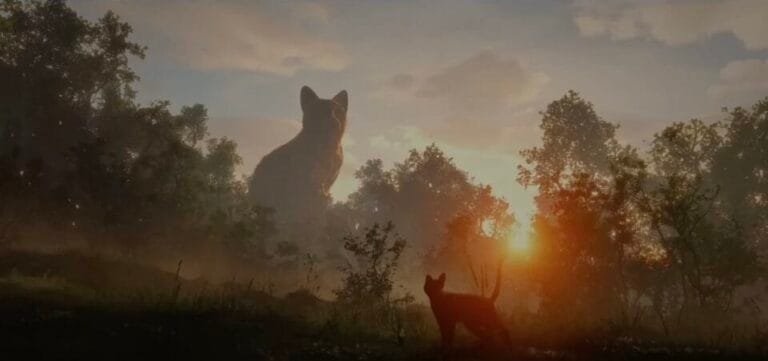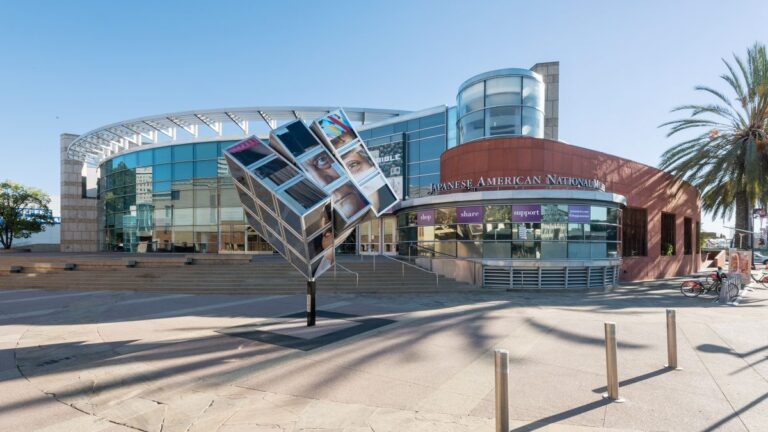LANDSCAPE OF EMPTINESS
In the vibrant chaos of a tourist hotspot exists a veritable universe of elephant pants where the air is thick with the smell of cigarette smoke and international brands of perfumes. The crowd, herded onto peculiar wheeled trams (due to their lack of rails) mingles with the calls of tuk-tuk drivers seeking passengers and the surreal sight of angels wandering the earth.
These angels, actually tourists adorned in traditional costumes, meander through their own sea of selfies, adding to the cacophony. Amidst all the mayhem the ‘Landscape of Emptiness’ exhibition by Sanitas Pradittasnee at the Art Centre of Silpakorn University, Wang Tha Phra, offers a temporary sanctuary to gain a brief peace of mind.
Immersing oneself in art is a precious pause—a moment of stillness where all senses are engaged, sharply tuned to the here and now. Yet, stepping out of the gallery and slipping back into the everyday—following the same routine—a lingering question surfaced days later as I sat down to pen this piece: What stirred those profound moments of tranquility? Could it truly be the ’emptiness’ as the exhibition’s title, ‘Landscape of Emptiness,’ suggests?
The answer I found is both yes and no. The ’emptiness’ encountered in that gallery space isn’t about absence or a void. Rather, it’s a palpable emptiness, a presence shaped by existence itself.

In ‘Landscape of Emptiness,’ Sanitas Pradittasnee revisits her signature palette of materials—clay, glass, and metal, among others. The shapes too echo her past with forms like pagodas and stupas asserting their existence. Yet, this current collection marks a departure in its sculptural minimalism: each piece embodies less “objectness” than ever making them lighter, less voluminous.
Even though her previous work, ‘Garden of Silence,’ seemed to dissolve into its surroundings, it retained a substantial material presence. Despite this pared-down objectness, the enduring forms remain intact, unaltered. In a striking shift, the iconic pagoda now arises not merely from solid materials but emerges through interwoven physicality and voids.
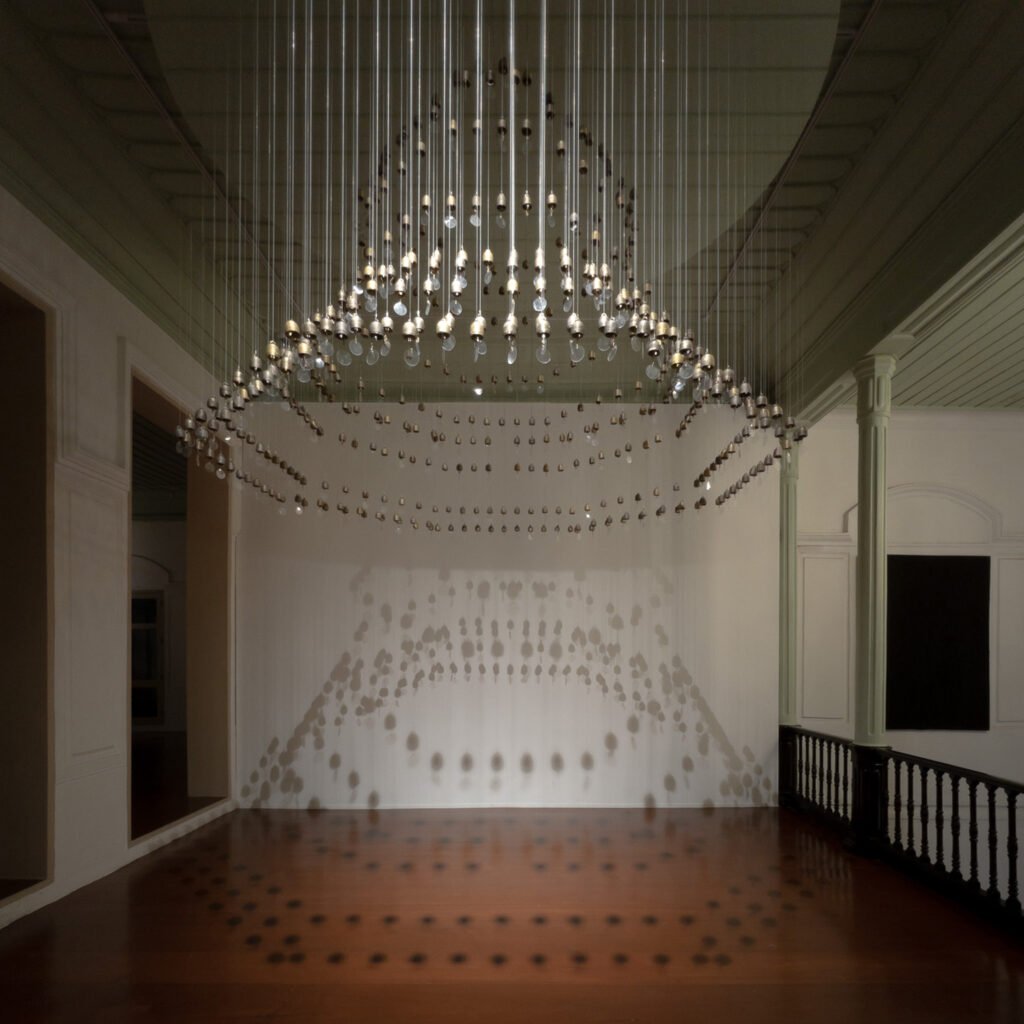
‘Silence’ is the first installation that viewers encounter upon ascending to the second floor of the gallery. This piece distinctly exemplifies form creation from objects and the surrounding void. The installation arranges multiple brass bells, each suspended from a round wooden panel overhead, with varied lengths, floating ethereally, creating an aerial form reminiscent of a floating pagoda base and imparting a sense of lightness and transparency.
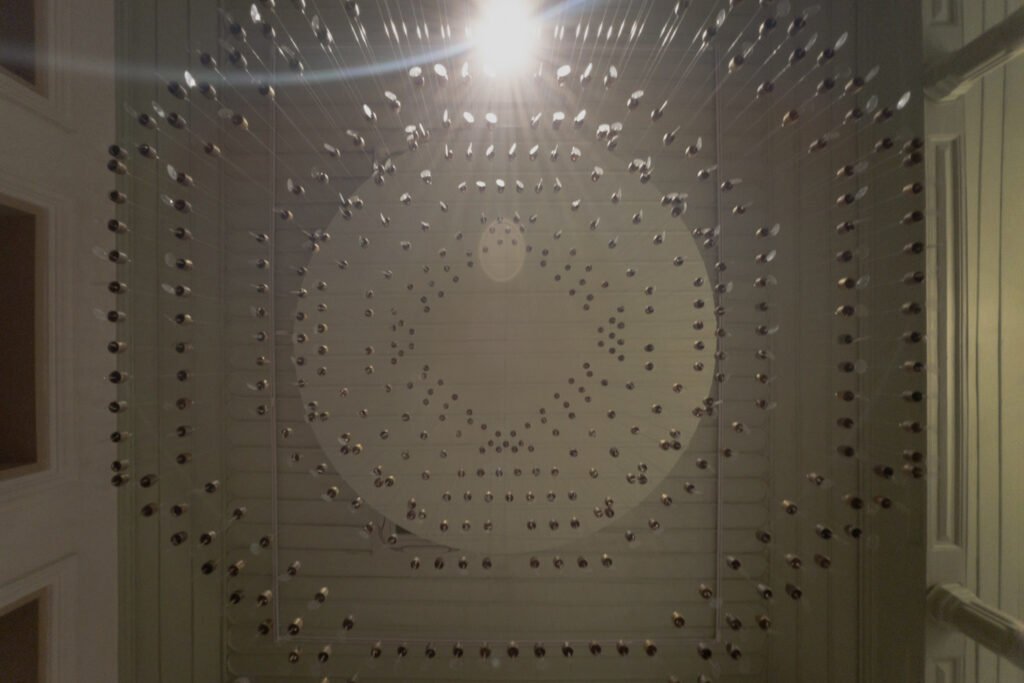
Within the enclosed space, where no wind can stir, these bells, designed to produce sound, hang silently— inert and unmoving, not fulfilling their intended function. But in this stillness, the artist, with the consultancy of Kullakaln Gururatana, has designed lighting that casts shadows of each bell onto the gallery’s white walls and wooden floors. Sketching out another pagoda the “intangible” shadows are formless yet they emerge from “tangible” objects.
Personally, ‘Silence’ was where I lingered longest in the show, drawn inexorably to its shadows. These shadows are not only integral to the artwork’s narrative, amplifying the concept the artist intends to convey, but they also possess a pristine beauty and a tranquil aura that arrests and ensnares the observer, binding us to the spot.
These shadows also beautifully coexist with the surrounding space, the shadow of the stair railing and harmonizing with ‘Impermanence,’ a painting steeped in dark, enigmatic tones and strategically positioned in the stairwell to share the same visual plane as the installation’s cast shadows. ‘Impermanence’ itself is a concoction of the earth—crafted from soil, dust, ash, and the latex of the River Tamarind tree. It is smoked over Palo Santo wood, an ancient ritual of the Inca tribes believed to purge negativity and restore tranquility and balance.
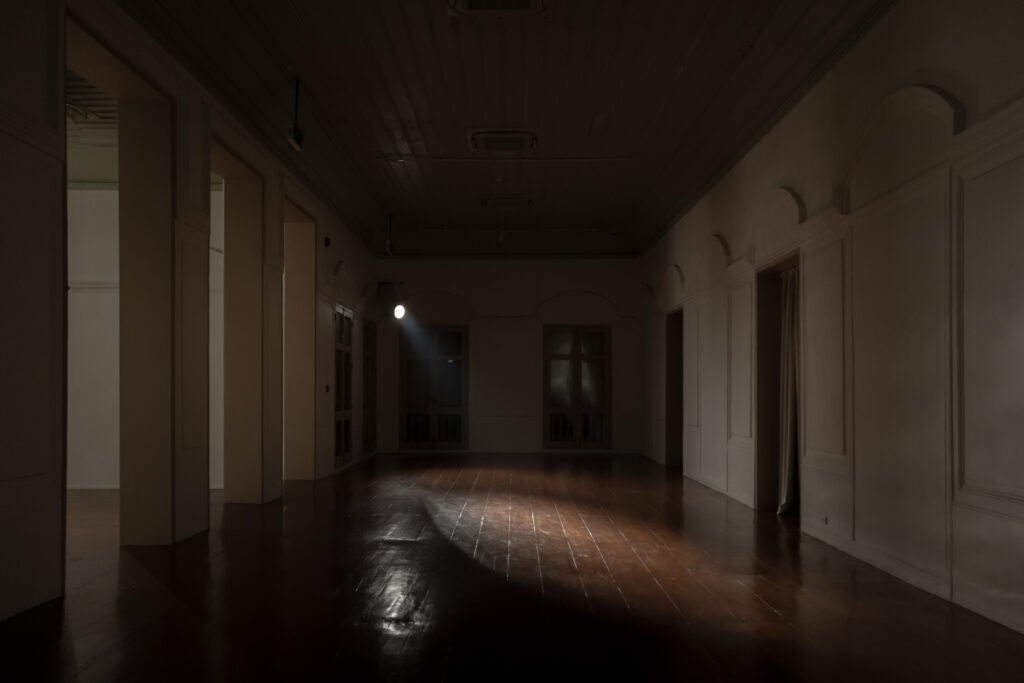
Adjacent to ‘Silence’ is an empty room with no objects. It is illuminated by a single spotlight from one corner, under which countless tiny dust particles float in the air. Upon closer inspection, the wooden floor of the gallery, where the light falls, reveals numerous footprints likely left by the artist, the crew, staff, and previous visitors. This is the artwork titled ‘Stardust, or we are…,’ a piece completely devoid of physical objects.



